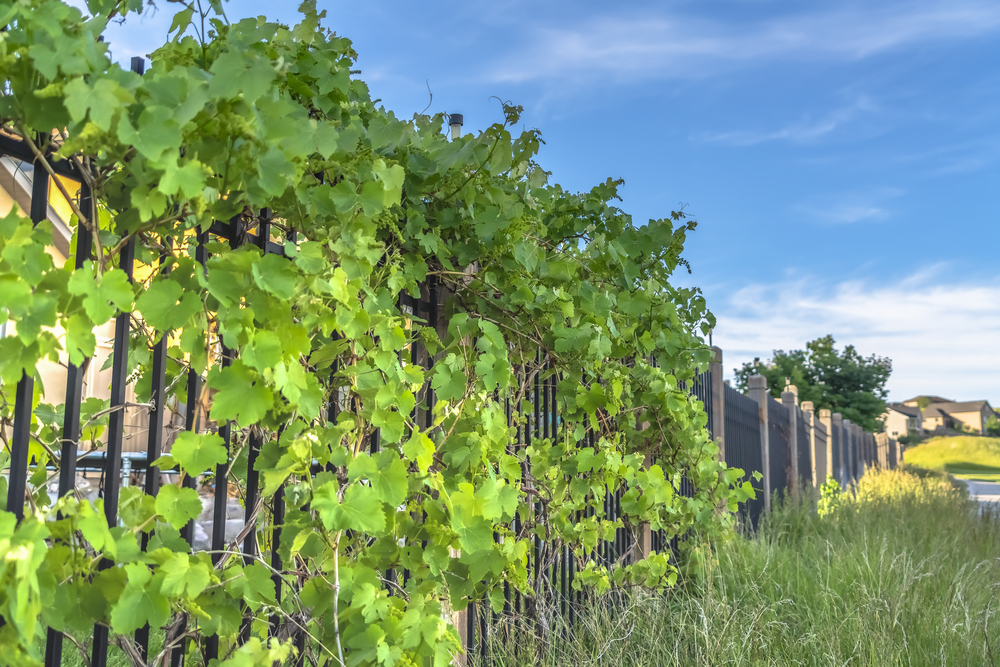All Categories
Featured

Amongst the most preferred choices, wood, plastic, and aluminum each offer special advantages and drawbacks. Right here's a failure of the pros and disadvantages of these 3 typical secure fencing materials.
Wood Fence. Timber secure fencing has been an ageless selection for house owners as a result of its natural elegance and versatility.
Pros:. Aesthetic Charm: Wood provides a classic and cozy look that matches a variety of architectural styles. Customizable: It can be painted, tarnished, or reduce right into distinct designs to suit personal choices. Cost-Effective: At first, wood fencing can be a budget-friendly option compared to other materials. Eco-Friendly: Timber is a renewable energy and can be sustainably sourced. Cons:. High Maintenance: Timber needs normal sealing, staining, or painting to avoid rot, insect damage, and weathering. Resilience Problems: Without appropriate treatment, timber can warp, split, or decay with time, specifically in areas with high humidity. Shorter Life-span: A wood fence usually lasts 10-20 years, depending on the sort of wood and level of upkeep. Timber is excellent for those that value a typical appearance and want to commit to its maintenance.
Vinyl Fence. Vinyl is a modern-day, low-maintenance secure fencing alternative that has expanded in popularity in recent times.

Pros:. Reduced Upkeep: Plastic does not require painting, staining, or securing and can be quickly cleaned up with soap and water. Climate Resistant: It withstands harsh climate condition without deteriorating, rusting, or bending. Lasting: Plastic fences can last 20-30 years with minimal upkeep. Variety of Styles: Readily available in several colors, designs, and structures, some vinyl alternatives imitate the look of wood. Disadvantages:. Higher Upfront Cost: Vinyl secure fencing can be extra expensive originally contrasted to wood. Brittleness in Winter: In severe cold, vinyl may fracture or end up being breakable. Limited Repair works: Individual panels can be challenging to replace, requiring careful matching to the existing fencing. Plastic is ideal fit for homeowners looking for a durable, low-maintenance option with modern-day appearances.
Aluminum Fencing. Light weight aluminum fencing is a resilient and lightweight option, commonly picked for its modern look and adaptability.
Pros:. Rust-Resistant: Aluminum does not corrosion, making it an exceptional option for moist or wet climates. Reduced Upkeep: Needs marginal maintenance and is simple to tidy. Durable: While light-weight, light weight aluminum is solid sufficient to hold up against many environmental problems. Long Life expectancy: Can last several years without substantial wear or degeneration. Range of Styles: Supplies a sleek and stylish appearance, usually used for attractive or ornamental objectives. Disadvantages:. Greater Cost: The initial investment for light weight aluminum fence is greater than wood or vinyl. Much Less Privacy: Aluminum fencings are typically developed with open pickets, making them much less efficient for privacy. Prone to Damages: Although long lasting, aluminum can be dented by solid impacts. Light weight aluminum is perfect for those seeking an elegant, long-lasting alternative that calls for very little care.
Making the Right Selection. Each secure fencing product-- timber, light weight aluminum, and vinyl-- uses unique advantages and drawbacks. Your decision should rely on your specific concerns, such as budget plan, upkeep preferences, climate, and aesthetic goals:
If you enjoy a typical look and do not mind routine maintenance,Select timber. Go with plastic if you want a low-maintenance, weather-resistant fencing with modern-day appeal. Select aluminum if you prioritize resilience, rust resistance, and a smooth layout. By evaluating these disadvantages and pros, you can select a fence material that boosts your home while meeting your functional demands.
Latest Posts
Explore Exclusive Auto Repair Deals in Chicago at Montclare Auto Repair
Published en
1 min read
The Benefits of Consistent Vehicle Maintenance at Montclare Auto Repair Keeps Your Wallet Happy
Published en
1 min read
Boost Your Residential Or Commercial Property with Overhead Door Systems
Published en
1 min read
More
Latest Posts
Explore Exclusive Auto Repair Deals in Chicago at Montclare Auto Repair
Published May 29, 25
1 min read
The Benefits of Consistent Vehicle Maintenance at Montclare Auto Repair Keeps Your Wallet Happy
Published May 28, 25
1 min read
Boost Your Residential Or Commercial Property with Overhead Door Systems
Published May 25, 25
1 min read